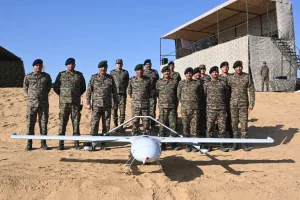The AFCAT (Air Force Common Admission Test) is a prestigious examination conducted by the Indian Air Force (IAF) to select candidates for various technical and non-technical posts in the Air Force. To excel in the AFCAT, candidates need to prepare themselves extensively in various subjects, including Static General Knowledge (GK). In the AFCAT 1 2024 Exam, one of the important topics in Static GK is “Universe & Solar Systems.” In this article, we will delve into this topic to help defence aspirants prepare effectively.
Universe – An Unfathomable Expanse
The universe is a vast and incomprehensible expanse filled with galaxies, stars, planets, and celestial objects. Understanding the basics of the universe is essential for aspirants aiming to join the Indian Air Force, as it plays a crucial role in various aspects of space technology and satellite communication.
Key Concepts about the Universe
- Galaxies: Galaxies are massive clusters of stars, dust, and dark matter bound together by gravity. The Milky Way, our home galaxy, is just one of billions of galaxies in the universe.
- Stars: Stars are celestial objects that emit light and heat due to nuclear fusion. The Sun is the closest star to Earth and is vital for our existence.
- Planets: Planets are celestial bodies that orbit stars. In our solar system, there are eight planets, with Earth being the third planet from the Sun.
- Astronomical Units: Astronomical units are used to measure distances in space. One astronomical unit (AU) is the average distance between the Earth and the Sun, which is approximately 93 million miles (150 million kilometers).
- Light-years: Light-years are used to measure vast interstellar distances. A light-year is the distance that light travels in one year, roughly 5.88 trillion miles (9.46 trillion kilometers).
Solar Systems
A solar system is a collection of celestial objects, including a star (usually referred to as a sun) and the celestial bodies that orbit it. Our solar system, known as the Solar System, consists of the Sun and all the objects that are gravitationally bound to it. The primary celestial bodies in our solar system include:
- The Sun: The Sun is a G-type main-sequence star at the center of our solar system. It provides light and heat to all the planets and other celestial bodies within its gravitational influence.
- Planets: There are eight planets in our solar system, divided into two categories: terrestrial (rocky) planets and gas giants. The terrestrial planets include Mercury, Venus, Earth, and Mars. The gas giants are Jupiter, Saturn, Uranus, and Neptune.
- Dwarf Planets: In addition to the eight recognized planets, there are also several dwarf planets in our solar system, with Pluto being the most famous.
- Asteroids and Comets: Asteroids are rocky, metallic objects that orbit the Sun, primarily in the asteroid belt between Mars and Jupiter. Comets are icy bodies with tails that can be seen when they approach the Sun.
- Moons: Most planets, including Earth, have natural satellites, commonly known as moons. For instance, Earth has one moon, while Jupiter has at least 79 moons.
The Importance of Universe & Solar Systems in Defence
Understanding the universe and solar systems is essential for defence aspirants for several reasons:
- Space Operations: The military and defence sectors rely on space technology for communication, reconnaissance, and navigation. Knowledge of the universe is critical in understanding the dynamics of satellites and space-based operations.
- Strategic Planning: In modern warfare, space plays a significant role in communication and surveillance. Defence personnel need to understand the celestial mechanics that affect satellite communication and navigation.
- Space Missions: India has been actively involved in space missions, including the Chandrayaan and Mangalyaan missions. Defence personnel may be involved in these missions, requiring knowledge of space systems.
- Aerospace Operations: For those aspiring to join the Air Force, understanding the cosmos is essential for navigating and operating aircraft and other aerospace vehicles.
Preparing for AFCAT – Universe & Solar Systems
To prepare for the Universe & Solar Systems section of the AFCAT 1 2024 Exam, consider the following tips:
- Study Materials: Gather reliable study materials, including textbooks, online resources, and video lectures, to learn about the universe and solar systems.
- Stay Updated: Keep yourself updated with the latest developments in space technology and missions, as the field is constantly evolving.
- Practice: Solve practice questions and take mock tests to assess your knowledge and time management skills.
- Visualization: Visual aids like diagrams and videos can make it easier to grasp complex astronomical concepts.
- Seek Guidance: If you’re struggling with the topic, consider seeking guidance from teachers, mentors, or experts in the field.
Understanding the universe and solar systems is not just a requirement for the AFCAT but also a valuable asset in a world where space technology and exploration are increasingly important. By mastering this section of the exam, you can not only excel in the AFCAT but also enhance your knowledge and readiness for a career in the defence sector.
In conclusion, aspirants preparing for the AFCAT 1 2024 Exam must dedicate time and effort to grasp the essentials of the universe and solar systems. A strong foundation in this field will not only help you pass the exam but also contribute to your success in the defence sector, where space technology and knowledge of celestial mechanics are indispensable.
Good luck with your preparation, and may you soar to new heights in your defence career!



















